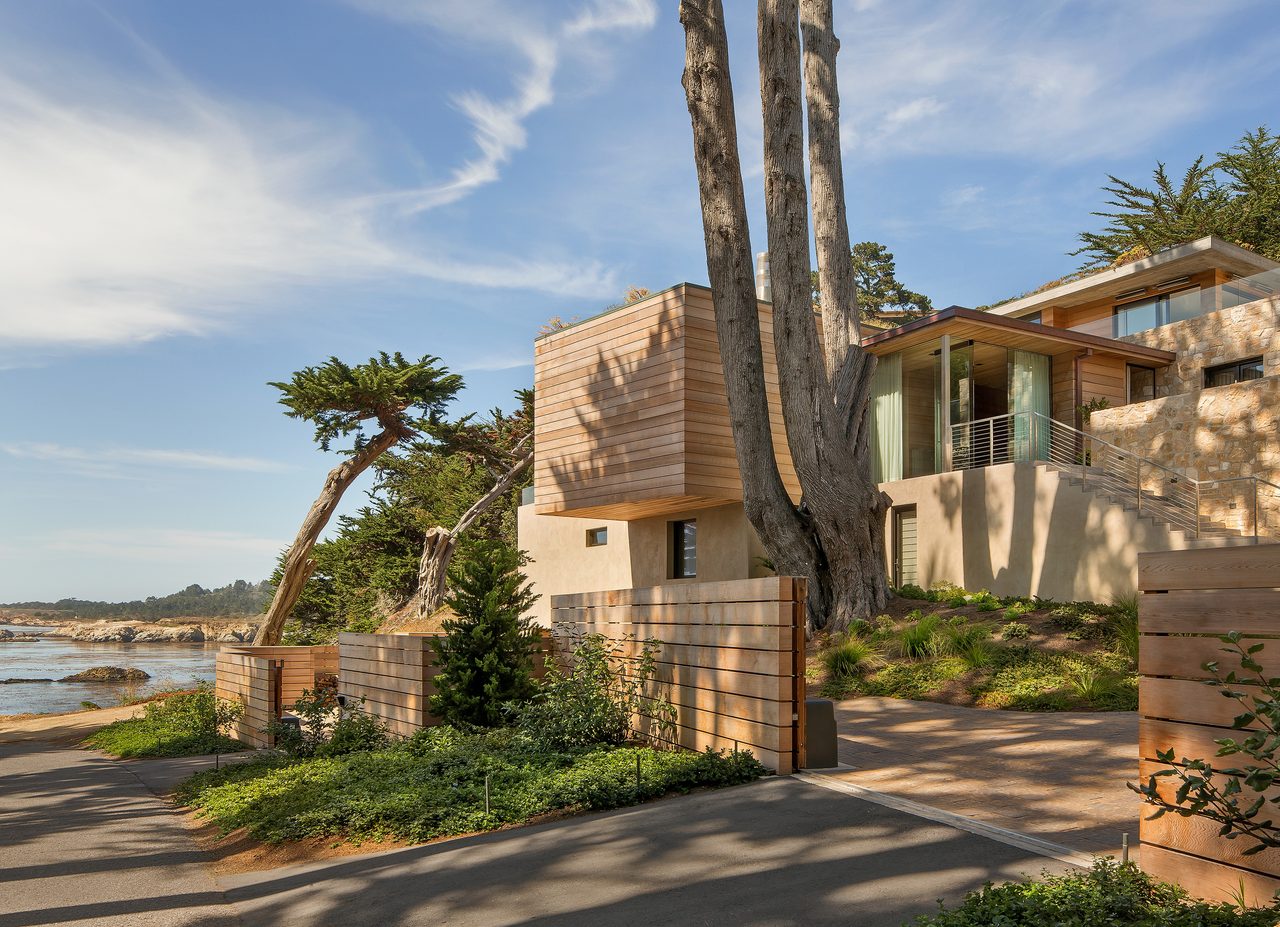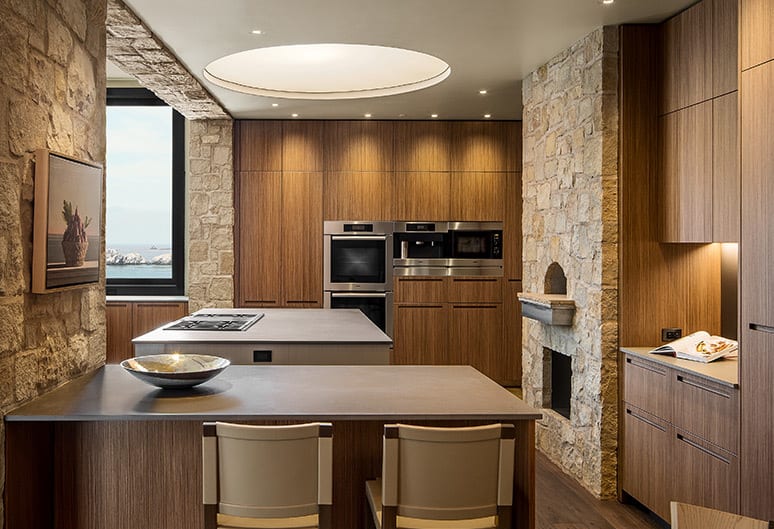NET ZERO
Pulling the Plug on All-Electric as the Only Path to ZNE



Luxury ZNE properties are often too remote to rely on electricity alone. Propane can help to boost ZNE readiness with mixed-fuel systems. Photo courtesy of Studio Schicketanz
The custom ZNE homes that architect Mary Ann Schicketanz builds for clients along the California coast and the cliffs of Big Sur seem to have it all: luxurious amenities, health-conscious features, design decisions that support the local ecology, and of course stunning views. “They want to have a place they can retreat to, that they can invite friends to,” Schicketanz says of her clients. “And just get out of the hectic life of the valley.”
But by nature of these remote projects, there’s one thing that her homes generally do not have: access to an electric grid. As the principal architect at Studio Schicketanz in Carmel, California, Schicketanz honors her firm’s commitment to sustainability by designing energy-neutral homes—without relying solely on electricity.
Schicketanz represents a forward-thinking school of builders and designers across the country that are achieving zero net energy performance with mixed fuel options. Like most designers and architects, she relies on solar photovoltaic (PV) panels and battery storage as a source of renewable power. But she’s learned that propane is versatile and reliable for energy-intensive systems such as space heating and water heating, making it a particularly effective solution for zero net energy homes. Not only do these propane systems offer the benefit of ongoing savings on the homeowner’s utility bills, but also the improved comfort of gas heating and performance of high-end gas ranges.
Savings and Efficiencies on ZNE Construction with Mixed-Fuel Systems
Mixed-fuel systems that combine electric with a low-source-ratio energy like propane are practical for ZNE and ZER projects. Not only can they help homeowners lower their monthly utility bills while reducing emissions, but they allow for the high performance of gas appliances so builders can tailor hybrid systems for the project’s specific needs. Mixed-fuel systems typically have lower initial costs and reduced ongoing energy usage costs, making them an ideal solution for builders and homeowners alike.
Energy consultant David Knight, principal of the Carmel, California-based mechanical engineering firm Monterey Energy Group, says that his clients are asking about zero net energy on almost every job. “A lot of people were thinking that the zero net energy code was mandating all-electric homes,” Knight said; “it’s not.” In fact, the code is neutral for propane, gas heating, and water heating systems, creating cost- and energy-saving opportunities for mixed-fuel options in ZNE projects.
“Very often it comes out [in project planning with clients] that their goal is to be truly net zero energy,” Knight says. “They truly want to produce as much energy as they consume.” He says other times “they just want a nice, efficient house, and they want to do what they would consider to be the greatest value.” The common thread across all projects is the desire for comfort, efficiency, environmental responsibility, and a healthy lifestyle — and they want to be able to afford it.

Many of Mary Ann Schicketanz’s luxury clients prefer a propane stovetop for their high-end kitchen. Photo courtesy of Studio Schicketanz
In high-performance projects like a ZNE or ZER home, the building’s heating and cooling loads are greatly reduced through the highly insulated envelope and extensive air sealing. Therefore, it may not be strategic to invest in further heating system efficiencies that could divert dollars from areas of the home’s design where they could have greater impact.
For example, ground-source heat pumps are traditionally very efficient but have very high first costs. Based on a detailed heating system analysis performed by the Propane Education & Research Council (PERC),1 a ground-source system for a typical-sized home would cost almost $35,000, compared to around $11,000 for a high-efficiency propane furnace. So, while the ground-source system was found to produce cost savings, the magnitude of these savings in a high-performance home with much lower loads would be smaller and take significantly longer to realize a return on investment.
Or consider installing a dual-fuel or hybrid heating system that combines an air-source heat pump with a high-efficiency propane furnace. The propane furnace can replace the inefficient electric resistance backup heat in cold outdoor temperatures, providing improved comfort and saving hundreds of dollars annually.
This solution would be appealing for David Knight’s clientele in California, where energy costs are an important consideration due to the state’s high electric costs, which can make using the electric grid for domestic hot water and space heating cost prohibitive. Instead, Knight typically evaluates propane and natural gas heating systems against the amortized cost of solar panels powering a heat pump. In forced-air systems, propane and gas furnaces still have a comfort advantage over heat pumps, Knight says. “On the furnace side, they just put out warmer air,” he says. “And so the comfort level tends to be better.”
Another alternative ZNE strategy with a light footprint is to install an air handler with a hydronic coil and a propane tankless water heater. Not only does a tankless water system save valuable space, but hot water from the tankless unit serves as a highly efficient heat source for the forced-air system while also providing on-demand domestic hot water—without the need to install venting and gas lines for a separate heating system.
David Knight’s clients have high expectations for their hot-water systems, Knight says. “They’re used to an unlimited amount of hot water that turns on in a few seconds from the time they hit the switch. And the biggest challenge for going all-electric is domestic hot water. Because there just really isn’t a domestic hot-water system that’s going to perform that way. With electric, you can add enough storage to make it so that they can get through, but it takes up a lot of space, and we’re already always fighting for space,” Knight says. “What we like to tell people with a gas unit is that we defy them to run out of domestic hot water,” Knight says. “We do not say that with electric units.”
Designing for Efficiency, Resilience, and Comfort
Builders, engineers, and architects like David Knight and Mary Ann Schicketanz have learned that attaining zero net energy goals doesn’t mean building all-electric homes, and that the optimal balance of sustainability, resilience, and performance frequently makes propane an important part of a mixed-fuel system.
“Our younger clients are extremely educated when it comes to energy efficiency, smart homes, LEED certification,” Schicketanz says. “Most of our clients want to achieve a net zero home. So they would like to generate the energy on site that is needed to run their home.”
For builders and designers seeking ambitious energy performance on their ZNE projects, propane offers an energy system that can be tailored to a project’s unique goals and budget. “We give them their options and the relevant benefits and features of different systems,” Knight says. “I almost always say, ‘Look, given this house, and given what you’ve told us about your goals, if this was my house, this is what I would do.’” By accruing deep education and experience across a variety of mixed-fuel options, Knight ensures that his firm is equipped to design a system appropriate for his clients’ dream home.
1 Newport Partners for the Propane Education & Research Council. A Comparative Analysis of Residential Heating Systems. (2018.)